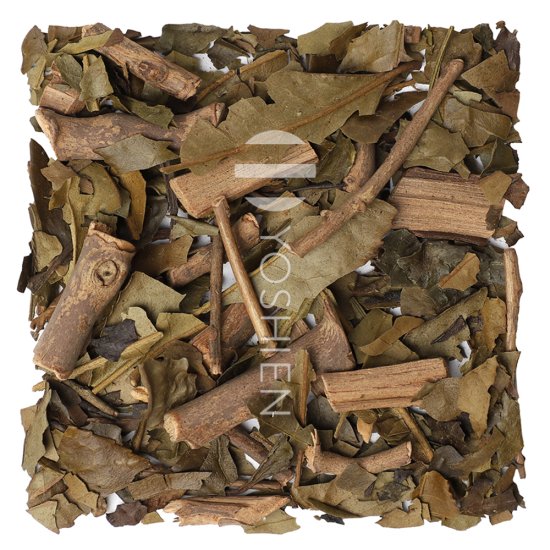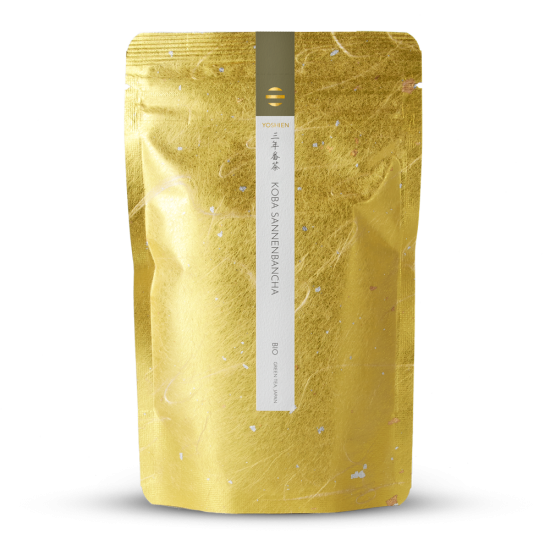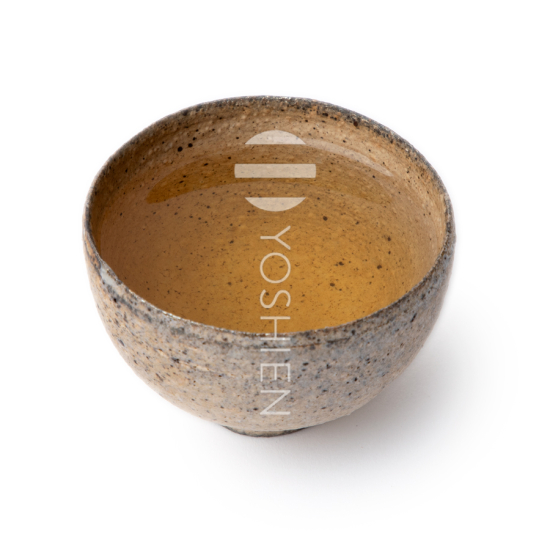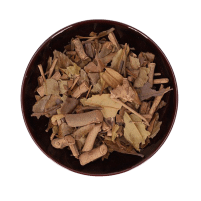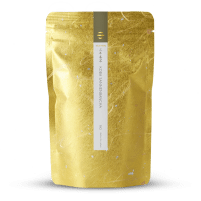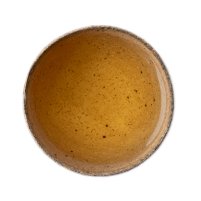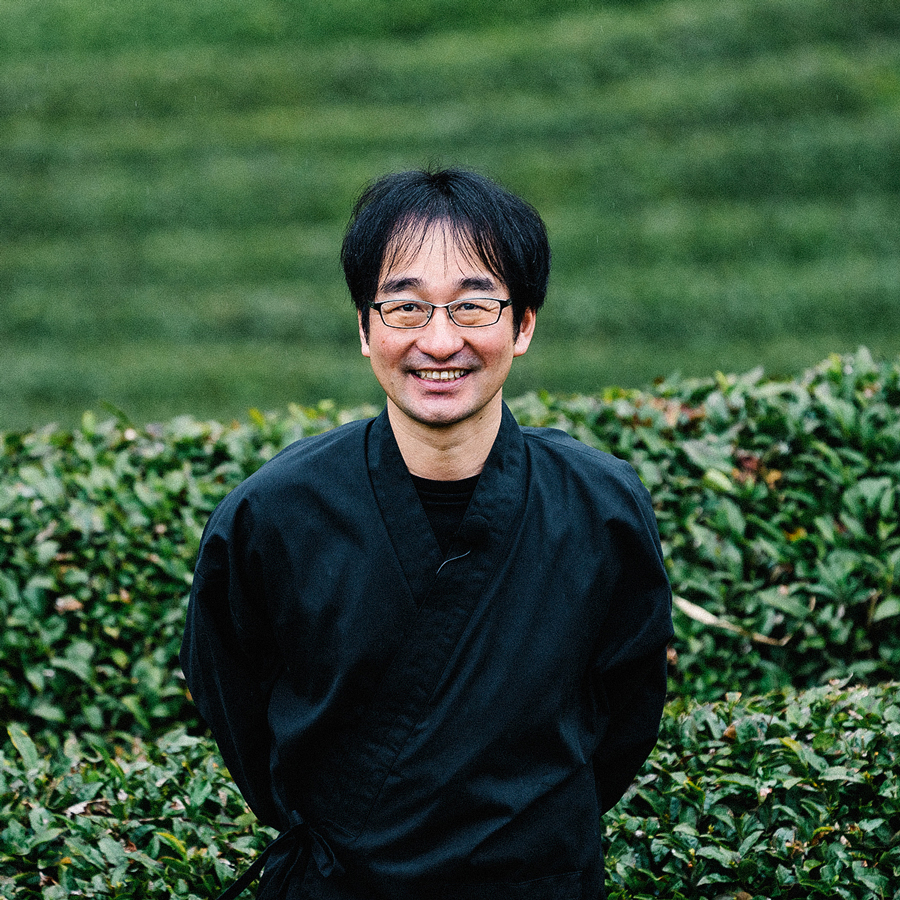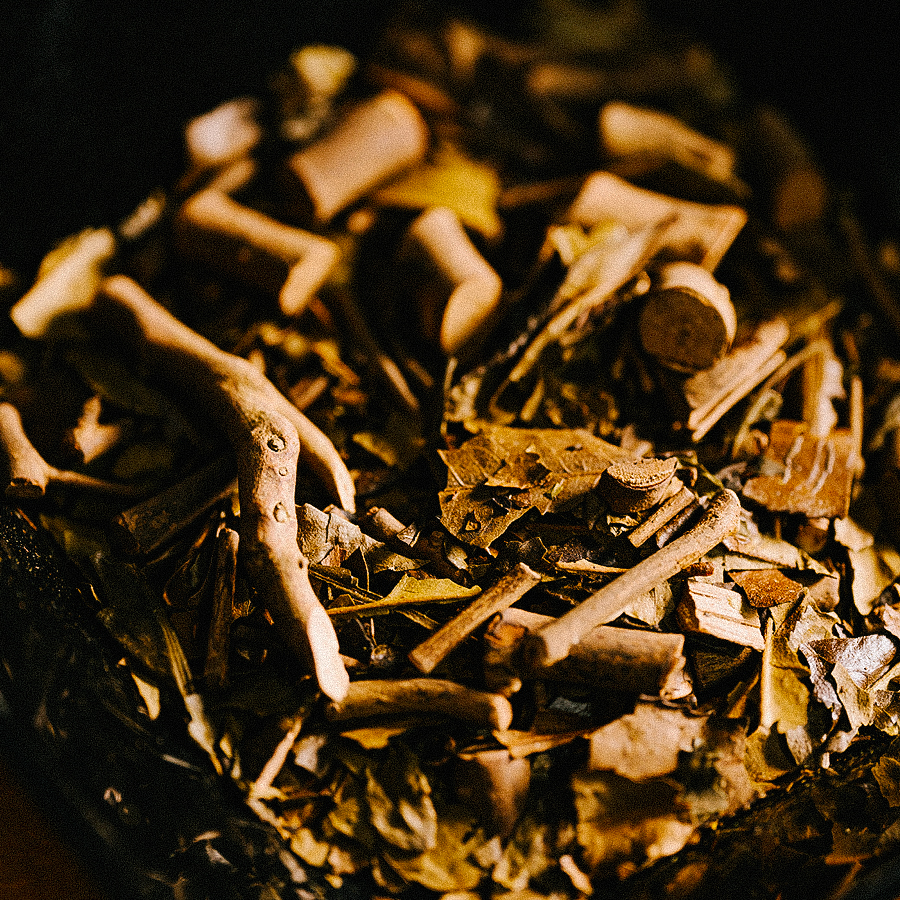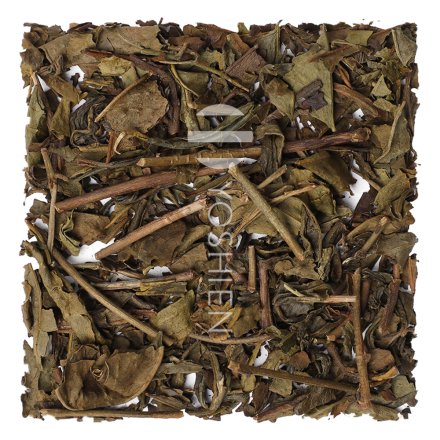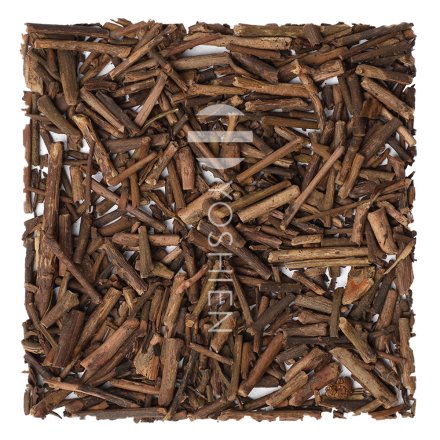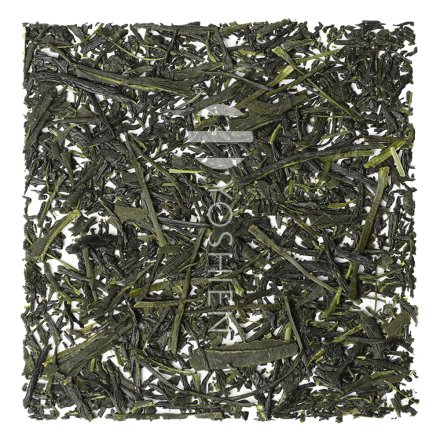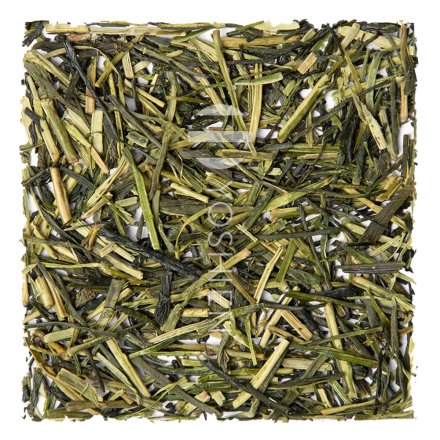"Old Leaf" (Koba 古葉) Sannenbancha
Thick, coarse stems and leaves grown for over 3 years are selected and hand-harvested for this tea. Harvesting in late autumn and winter guarantees optimal polysaccharide content. This variety is only available in very small quantities in Japan, and is highly sought-after.
Kamairi
This variety is processed as kamairicha (釜炒り茶) (kama 釜, "kiln"; iri 炒り, "roast"; cha 茶, "tea"), which is made following a similar method to many Chinese green teas. Oxidation is prevented by firing the oven at around 105°C for 40 minutes. Kamairicha is rare in Japan, and only a few tea farmers specialise in the method.
Kamairicha and Ceramics: Both from China
The kamairicha technique was brought to Japan from China along with ceramics (produced using kilns). Potter Hong Lin Min (紅令民) brought the technique to Ureshino from China in 1504. Chinese tea seeds and the kamairi technique were brought to Reigan Temple by the Japanese monk Eirin Shyuzui as early as 1406. Since then, Kamairicha has become a traditional tea consumed in Kyushu. Tea farms in the northern highlands of Miyazaki have a reputation for being Japan's best Kamairi farms.
Kamairicha
Unlike steamed green teas, kiln-fired teas develop a unique, less bitter flavour with less astringency and a sweeter aftertaste. This is referred to as kamaka (釜香): kama (釜; pan/kettle), and ka (香; aroma). Kamairicha goes well with rich and salty foods, which are popular in Kyushu.
Gokase 五ヶ瀬
The Miyazaki Sabo tea fields are located at a relatively high elevation of over 500m in the northern, mountainous region of Miyazaki. Although it is located in the tropical climate zone (with temperatures reaching up to 33°C in summer), nighttime and winter temperatures are very low (sometimes dropping to -10°C). In winter, snowfall is common and frost can occur from the beginning of October to the end of April.
Single Origin
This tea is exclusively sourced from the above mentioned tea farm in Miyazaki. Sourced directly from the tea farmer.
Organic Certification

PL-EKO-01
Nicht-EU-Landwirtschaft





